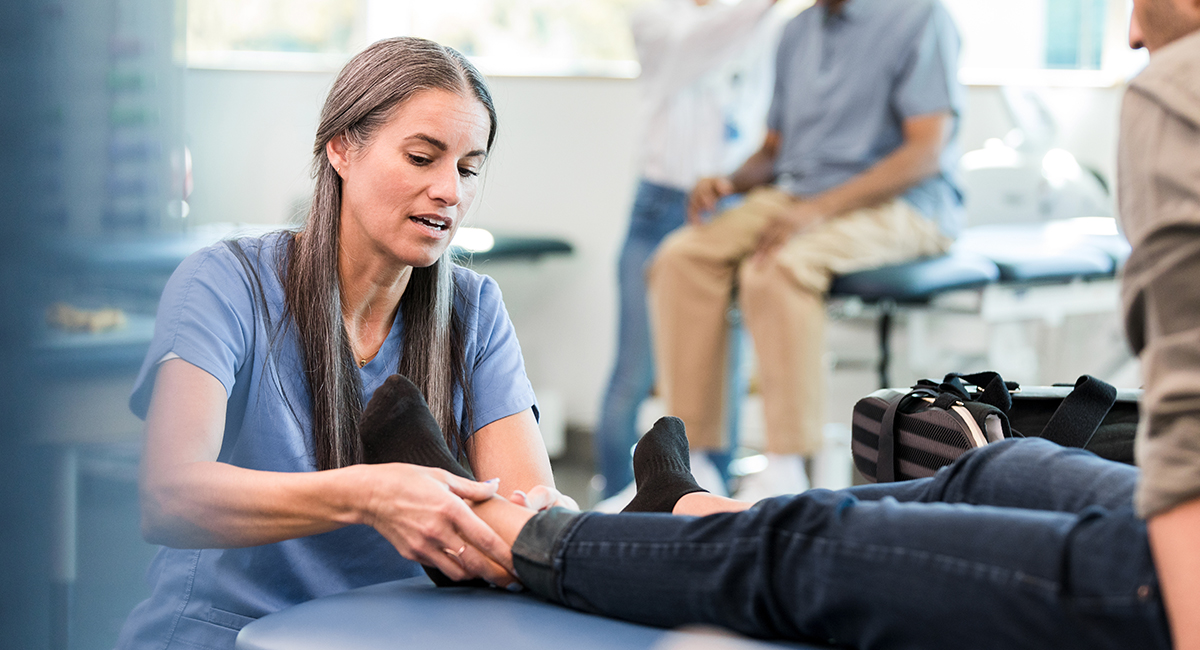Ankle OA Replacement Surgery
Orthopedic surgeons present research on ankle implant designs for osteoarthritis at the 2021 AOFAS meeting.
By Jason Kim | Sept. 29, 2021
While osteoarthritis (OA) in the ankle is less common than in other weight-bearing joints, ankle OA is no less painful or disabling. And unlike for knee and hip joints, surgical solutions for end-stage ankle OA are not well-developed. Patients with disease in their ankles are less satisfied with their surgery and have more complications.
At the recent American Orthopaedic Foot and Ankle Society (AOFAS) Annual Meeting, world-renowned orthopedic surgeon-scientist and Kenneth A. Johnson International Speaker Award winner Victor Valderrabano, MD, PhD, of the Swiss Ortho Center, presented his work on total ankle arthroplasty (TAA), or ankle joint replacement surgery. Dr. Valderrabano specifically focused on his describing his work in mobile-bearing TAA designs and considerations with the technology.
The current generation of TAA hardware consists of either a two-part, fixed-bearing design, with a durable polymer component rigidly fixed to the tibial component, or a three-part design, where the polymer component has some mobility underneath the tibia. The mobile-bearing implants are popular in Europe, while the majority of implants used in the U.S. are fixed-bearing designs.
In Dr. Valderrabano’s presentation, he contrasted mobile-bearing TAA with the fixed TAA and ankle arthrodesis (fusion). While more advances must be made in the mobile-bearing TAA, the technique may have more promise in restoring the most natural patient biomechanics than either fixed-bearing or ankle fusion techniques. Patients and their surgeons should also consider parameters such as the polyethylene material used in the TAA to resist wear and fractures to the implant as well as the fixation method to shield shear stress on the implant.
There is some controversy over the various techniques. Fixed-bearing TAA and ankle fusion arguably have better outcomes for many patients than mobile-bearing TAA. But for patients who are younger, active or sports enthusiasts, mobile-bearing TAA might be preferred because they result in better biomechanics. But the mobile-bearing technique is more likely to require revision surgeries to ensure the patient has the best outcome and balance. In Dr. Valderrabano’s presentation, compelling anecdotes were presented in the form of videos from his satisfied patients walking with improved biomechanics, playing tennis and ballet dancing.
Anyone considering ankle replacement or fusion should discuss it extensively with their orthopedic surgeon. Mobile-bearing TAA may be a potential solution for some patients, but it should be considered carefully in comparison with fixed TAA, fusion and other potential treatment options. The topic remains controversial and orthopedic surgeons have not reached a consensus on the best solution.
Upcoming OACS Forums
The Arthritis Foundation’s OA Clinical Studies (OACS) program supports the discussion of important topics in OA clinical research, including scientific advancements in treatment options for ankle and foot OA. Please join us for a compelling and broad program with expert speakers arranged by Charlie Saltzman, MD, of the University of Utah.
- December 3rd, Session 1 - Summary - 2021 OACS Forum Series: Session 1- Ankles and Feet (cvent.com)
- December 10th, Session 2: Summary - 2021 OACS Forum Series: Session 2- Ankles & Feet (cvent.com)
Get Involved
Reach out to learn more about the OACS Forum series and how you can get involved.


